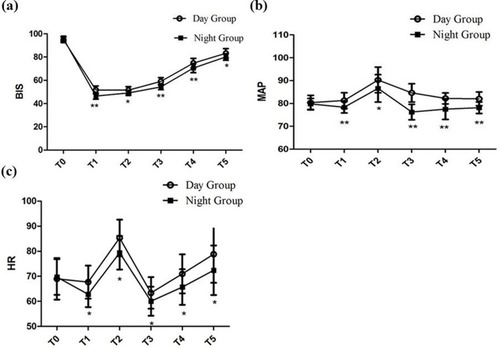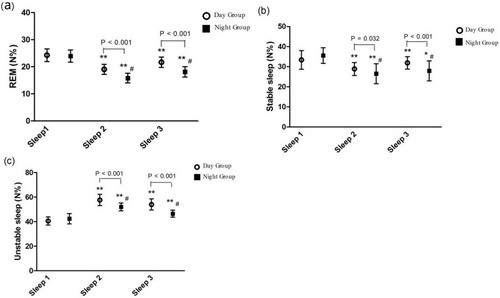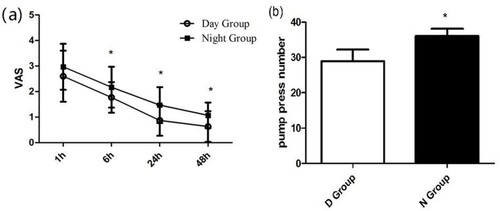Figures & data
Table 1 Baseline Characteristics Of Patients In The Day Group And The Night Group
Figure 2 BIS, Heart rate (HR) and Mean arterial pressure (MAP) during the operation. (A) Intraoperative BIS at different time points; (B) intraoperative MAP at different time points; (C) intraoperative HR at different time points; * vs the Night Group: P < 0.05; ** vs the Night Group: P < 0.001. T0: 5 mins after entering the operation room; T1: Intubation; T2: 5 mins after intubating; T3: At the end of the operation; T4: Extubation; T5: 5 mins after extubating.

Table 2 Total Dose Of Dexmedetomidine And Remifentanil Of Patients In The Day Group And The Night Group
Figure 3 Comparison of sleep efficiency and the AIS scores between the Day Group and the Night Group. (A) Sleep efficiency; (B) AIS. AIS: The Athens Insomnia Scale; Sleep efficiency: the ratio of total sleep time/total recording time. Sleep 1: the night before surgery; Sleep 2: the first night after surgery; Sleep 3: the third night after surgery. In the same group, ** vs Sleep 1: P < 0.001. At the same point, # vs the Day Group: P < 0.05.

Figure 4 Comparison of the percentage of sleep stages distribution between the Day Group and the Night Group. (A) REM; (B) Stable sleep; (C) Unstable sleep. REM: Rapid eye movement; Sleep 1: the night before surgery; Sleep 2: the first night after surgery; Sleep 3: the third night after surgery. In the same group, * vs Sleep 1: P < 0.05; ** vs Sleep 1: P < 0.001. At the same point, # vs the Day Group: P < 0.05.



